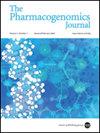Genetic markers of early response to lurasidone in acute schizophrenia
IF 2.9
3区 医学
Q2 GENETICS & HEREDITY
引用次数: 0
Abstract
Prediction of treatment response by genetic biomarkers has potential for clinical use and contributes to the understanding of pathophysiology and drug mechanism of action. The purpose of this study is to detect genetic biomarkers possibly associated with response to lurasidone, during the first four weeks of treatment. One-hundred and seventy-one acutely psychotic patients from two placebo-controlled clinical trials of lurasidone were included. Genetic associations with changes in Positive and Negative Syndrome Scale total score at weeks one, two, and four were examined. Genotyping was done with the Affymetrix 6.0 microarray and associations were computed using PLINK regression model. Although genome-wide significance was not reached with a limited sample size, signals of potential interest for further studies were with genes important for neurogenesis. Possible week one marker, rs6459950 (p = 7.05 × 10−7), was close to the sonic hedgehog gene (SHH), involved in neuronal differentiation and neurogenesis. Possible week two marker, rs7435958, was a SNP of GABRB1, encoding the GABAA Receptor β1. Notably, possible week four signals included a SNP within PTCH1, a specific receptor for the SHH, the possible week one marker. Pathway analysis supported the possibility that neurogenesis might be involved in early antipsychotic response. Tissue enrichment analysis suggested that potential signals were enriched in anterior cingulate cortex, reported to be relevant in antipsychotic action. This is the first study to examine genes possibly associated with very early response to lurasidone. Further replication studies in larger sample size should be required.

鲁拉西酮对急性精神分裂症早期反应的遗传标记。
通过遗传生物标志物预测治疗反应具有潜在的临床应用价值,有助于了解病理生理和药物作用机制。本研究的目的是在治疗的前四周检测可能与鲁拉西酮反应相关的遗传生物标志物。171名来自鲁拉西酮两项安慰剂对照临床试验的急性精神病患者纳入研究。在第1周、第2周和第4周检测阳性和阴性综合征量表总分变化的遗传关联。使用Affymetrix 6.0微阵列进行基因分型,并使用PLINK回归模型计算相关性。尽管在有限的样本量下没有达到全基因组意义,但对进一步研究有潜在兴趣的信号是对神经发生重要的基因。可能的第一周标记物rs6459950 (p = 7.05 × 10-7)与参与神经元分化和神经发生的sonic hedgehog基因(SHH)接近。可能的第二周标记rs7435958是GABRB1的SNP,编码GABAA受体β1。值得注意的是,可能的第四周信号包括PTCH1内的SNP, PTCH1是SHH的特异性受体,可能是第一周的标记。通路分析支持神经发生可能参与早期抗精神病反应的可能性。组织富集分析表明,潜在信号在前扣带皮层富集,据报道与抗精神病作用有关。这是首次研究可能与鲁拉西酮早期反应相关的基因。需要在更大的样本量下进行进一步的重复性研究。
本文章由计算机程序翻译,如有差异,请以英文原文为准。
求助全文
约1分钟内获得全文
求助全文
来源期刊

Pharmacogenomics Journal
医学-药学
CiteScore
7.20
自引率
0.00%
发文量
35
审稿时长
6-12 weeks
期刊介绍:
The Pharmacogenomics Journal is a print and electronic journal, which is dedicated to the rapid publication of original research on pharmacogenomics and its clinical applications.
Key areas of coverage include:
Personalized medicine
Effects of genetic variability on drug toxicity and efficacy
Identification and functional characterization of polymorphisms relevant to drug action
Pharmacodynamic and pharmacokinetic variations and drug efficacy
Integration of new developments in the genome project and proteomics into clinical medicine, pharmacology, and therapeutics
Clinical applications of genomic science
Identification of novel genomic targets for drug development
Potential benefits of pharmacogenomics.
 求助内容:
求助内容: 应助结果提醒方式:
应助结果提醒方式:


